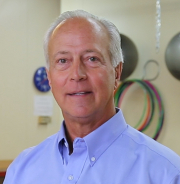Regardless of what you have done all winter it is doubtful you are ready to play golf. Exercising throughout the winter months usually does not involve using muscles that you will need for the demands of golf. The injury profile data from Professional Sports Care has targeted muscle groups that are most susceptible to stress and injury. It is these muscle groups that you must target in your preparation.
The most effective program to be implemented must address mobility and flexibility. A basic stretching regime is a good place to start. In the Player Performance facilities on the PGA Tour we use two basic approaches when a PGA golfer comes in to begin a flexibility program. After a comprehensive assessment we begin with static stretching of designated areas where the golfer holds the stretch for 30-60 seconds. Designated areas are determined from the assessment and reflect the body's needs based on injury profiles, body capabilities and golf demands. Once static protocol is completed a foam roller is used to further release tightness and restrictions in the myofascial components of soft tissues. A foam roller is used for 1-3 minutes on each designated muscle group. Additional more advanced techniques for mobility and flexibility are available depending on the capabilities of the golfer.
Mobility and flexibility should target the following areas:
1. Hip flexors and rotators (internal and external).
2. Shoulders (flexors, internal and external rotators).
3. Thoracic spine (mid back).
4. Cervical spine (neck).
Mobility and flexibility are only half the picture however. Preparing the body for golf would not be complete if you did not address muscle activation. Muscle activation is the wake up call to prepare a muscle to contract in sequence and to actively participate in a movement demand. When one muscle is tight and inflexible, the opposing muscle, or antagonist, deactivates to various levels. Deactivating means the muscle is somewhat sluggish in its response to what you want it to do. This neuromuscular concept is called reciprocal inhibition. The tighter one muscle group is the more the opposing muscle will deactivate. Deactivation of a muscle group leaves the body to fend for itself. Muscle sequencing becomes haphazard. When the brain sends a signal for a muscle group to activate the muscle is not ready or capable to do its job. Not a good situation if your movement pattern demands a disciplined muscle sequencing response like golf.
Therefore to fully prepare a muscle group for any activity, stretching and muscle activation go hand in hand. Although preparation for golf should involve all muscle groups in the body the most important are:
|
Stretch |
Activate |
|
1. Hip Flexors (quadriceps, tensor fascia lata, psoas). |
Hip extensors (gluteus maximus and medius). |
|
2. Shoulders (pectoralis major, minor, subscapularis). |
Mid back (lower trapezius, rhomboids). |
|
3. Neck flexors |
Neck extensors. |
The importance of the thoracic spine and rotation will be addressed in a subsequent blog.
To find stretches and activation patterns for golf go to www.tomlafountain.com and look for exercise protocol. There you will find basic exercises to prepare you for golf and other rotary sports such as tennis, baseball, and hockey. All are explained in video detail.
GET GOLF READY!

